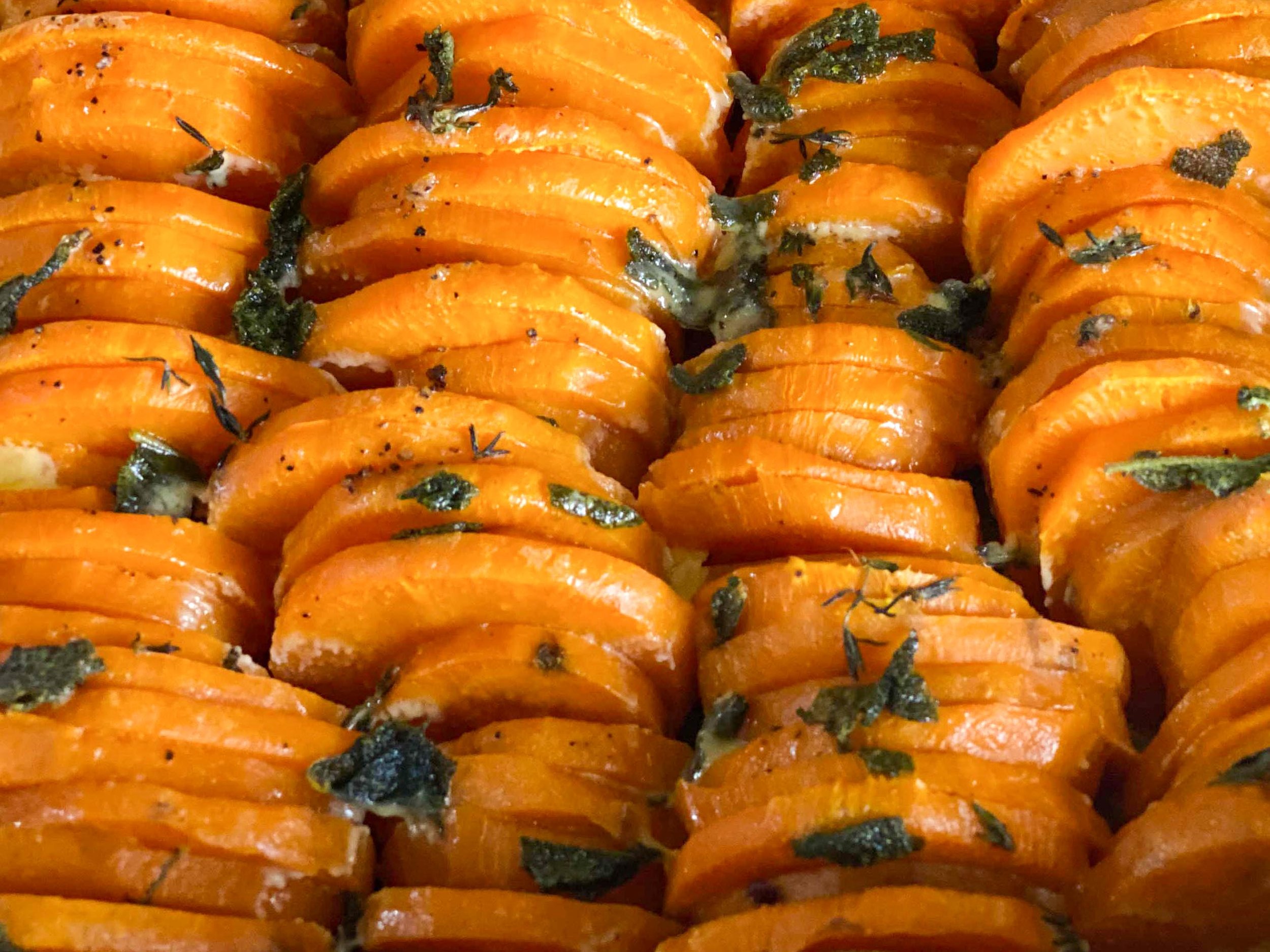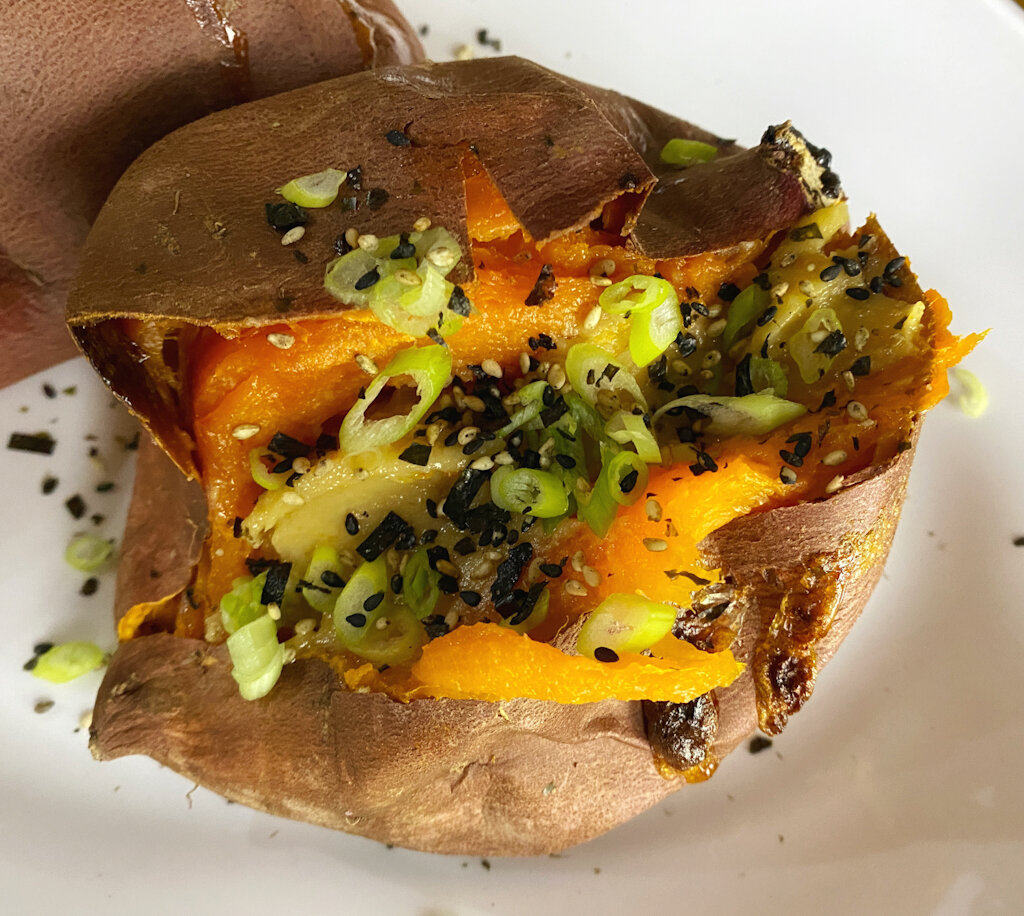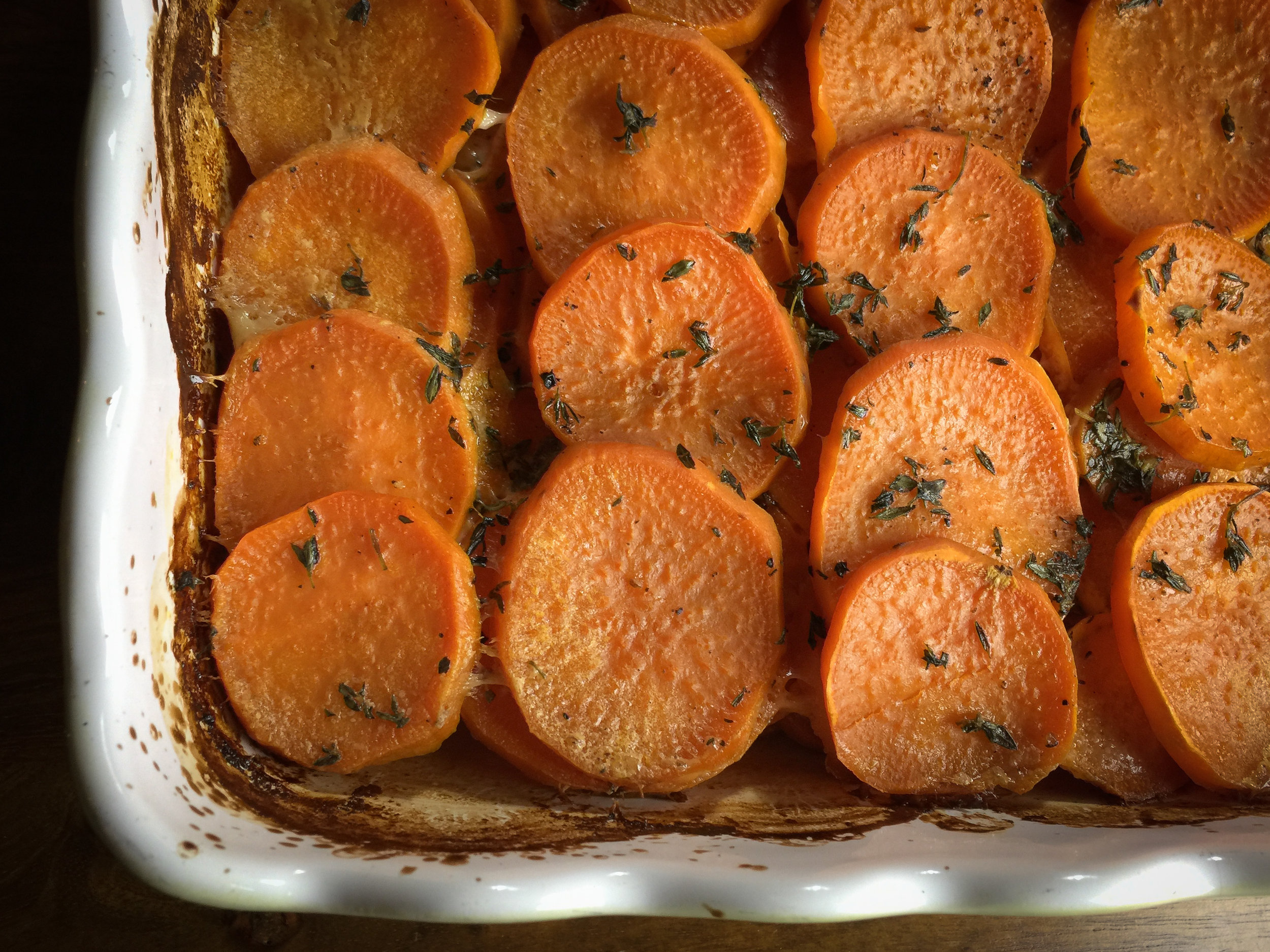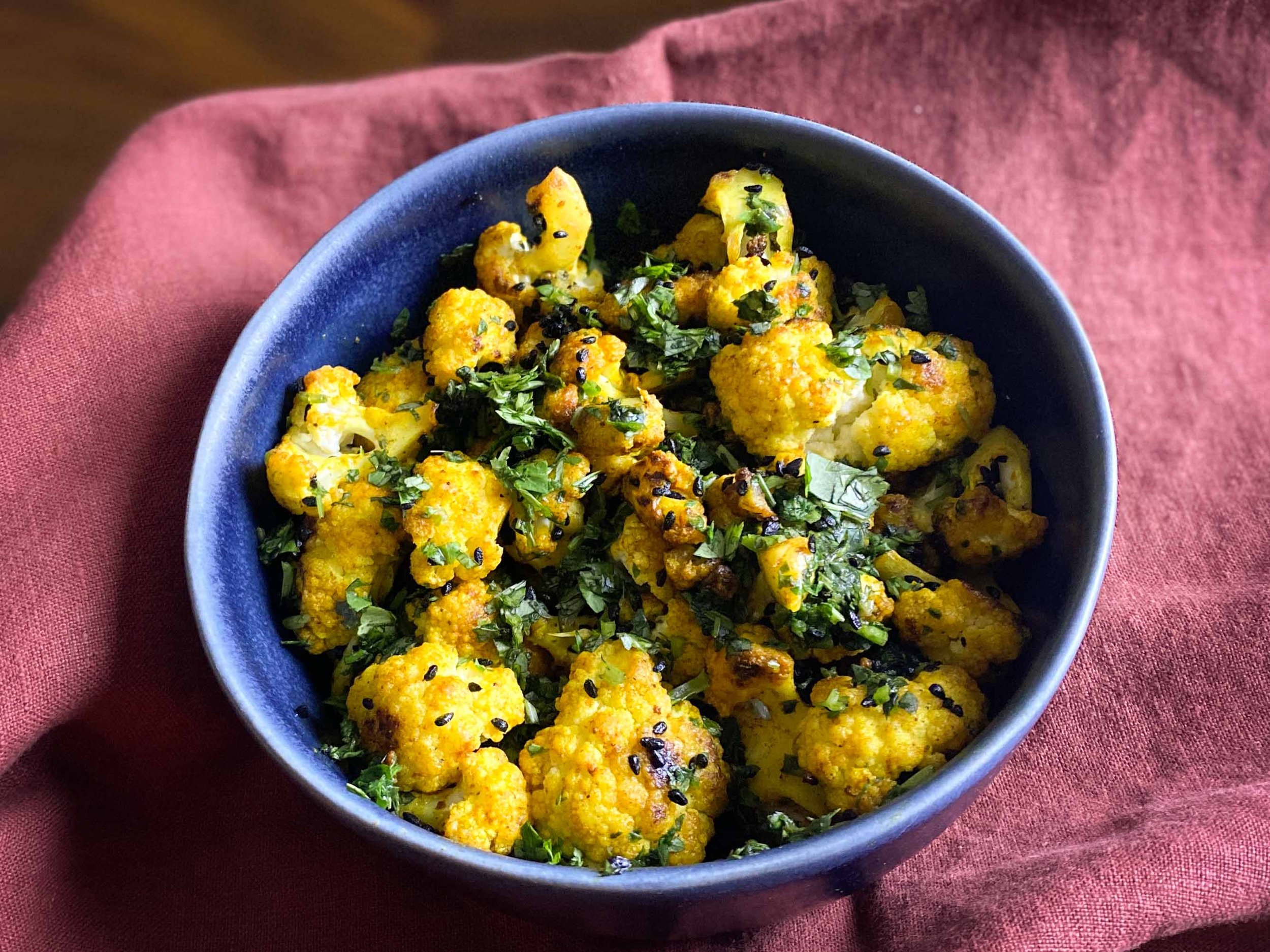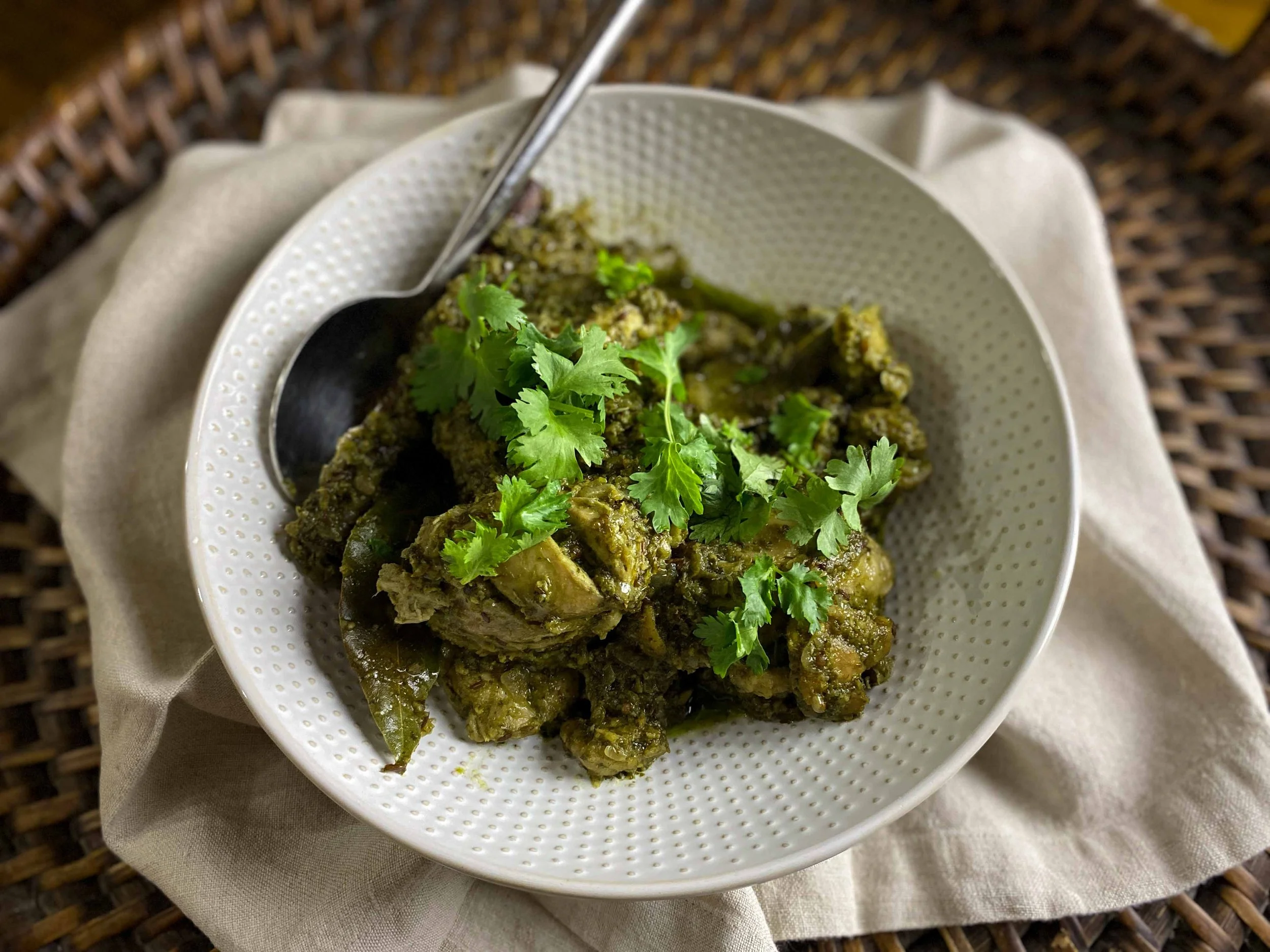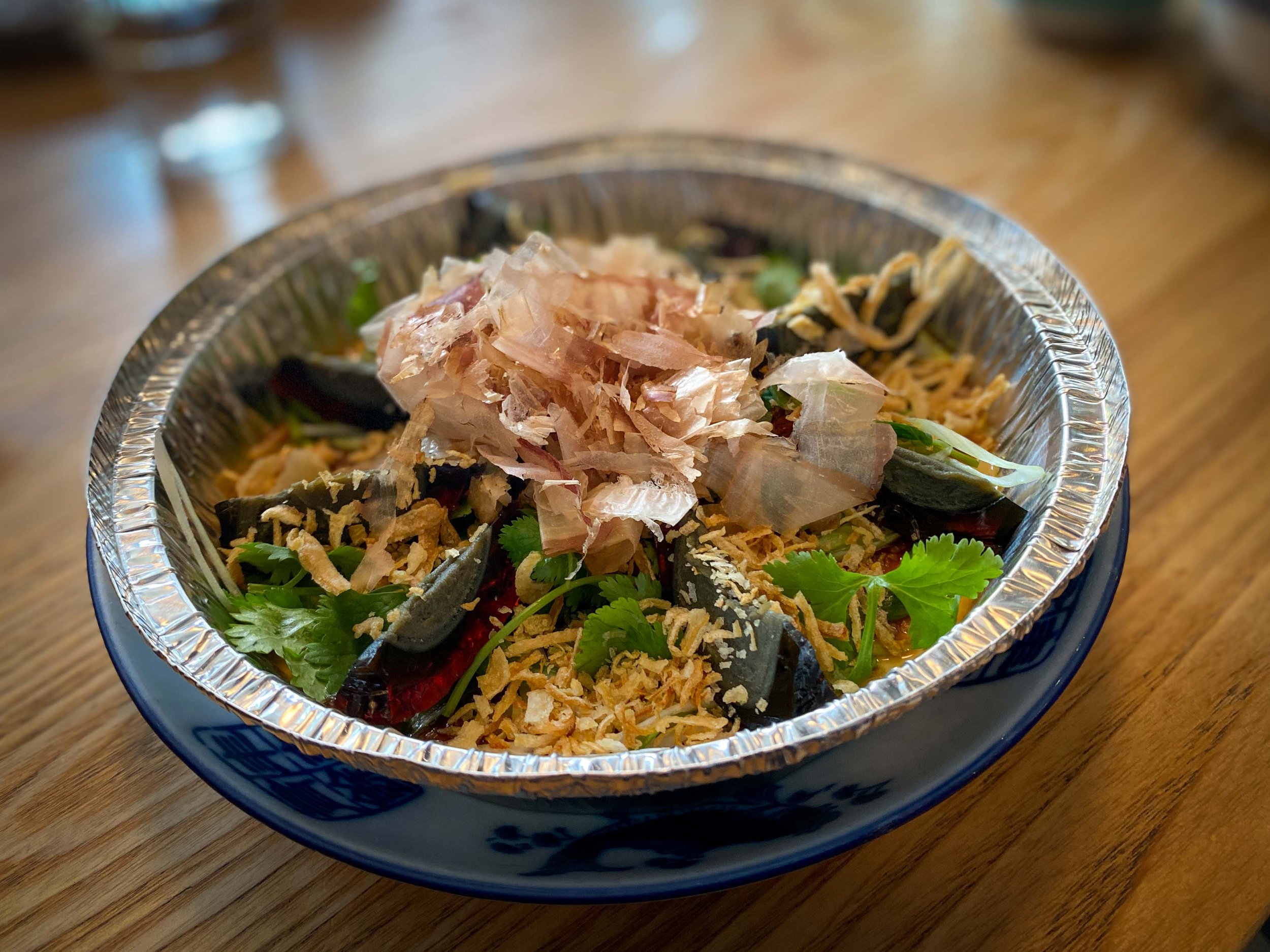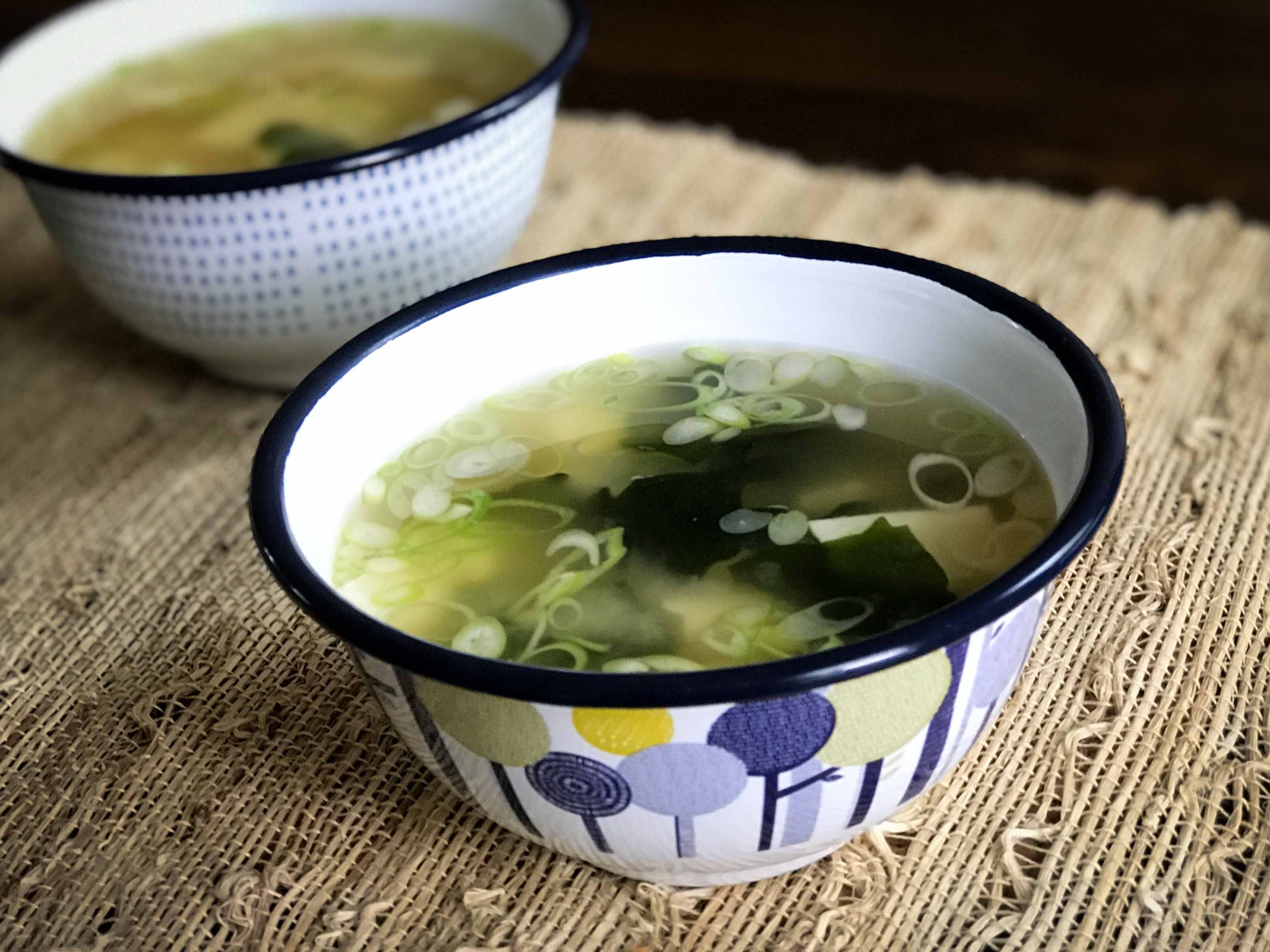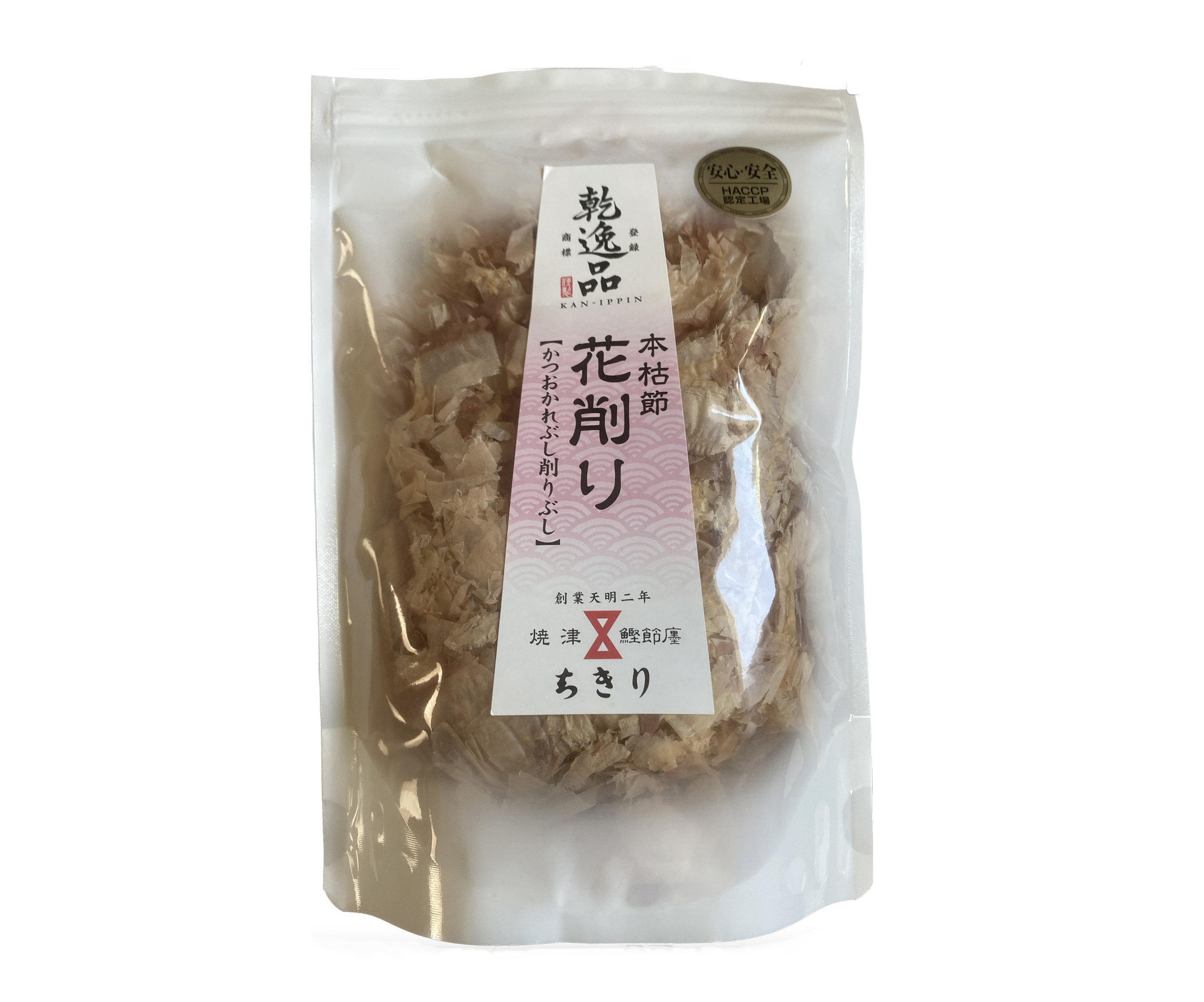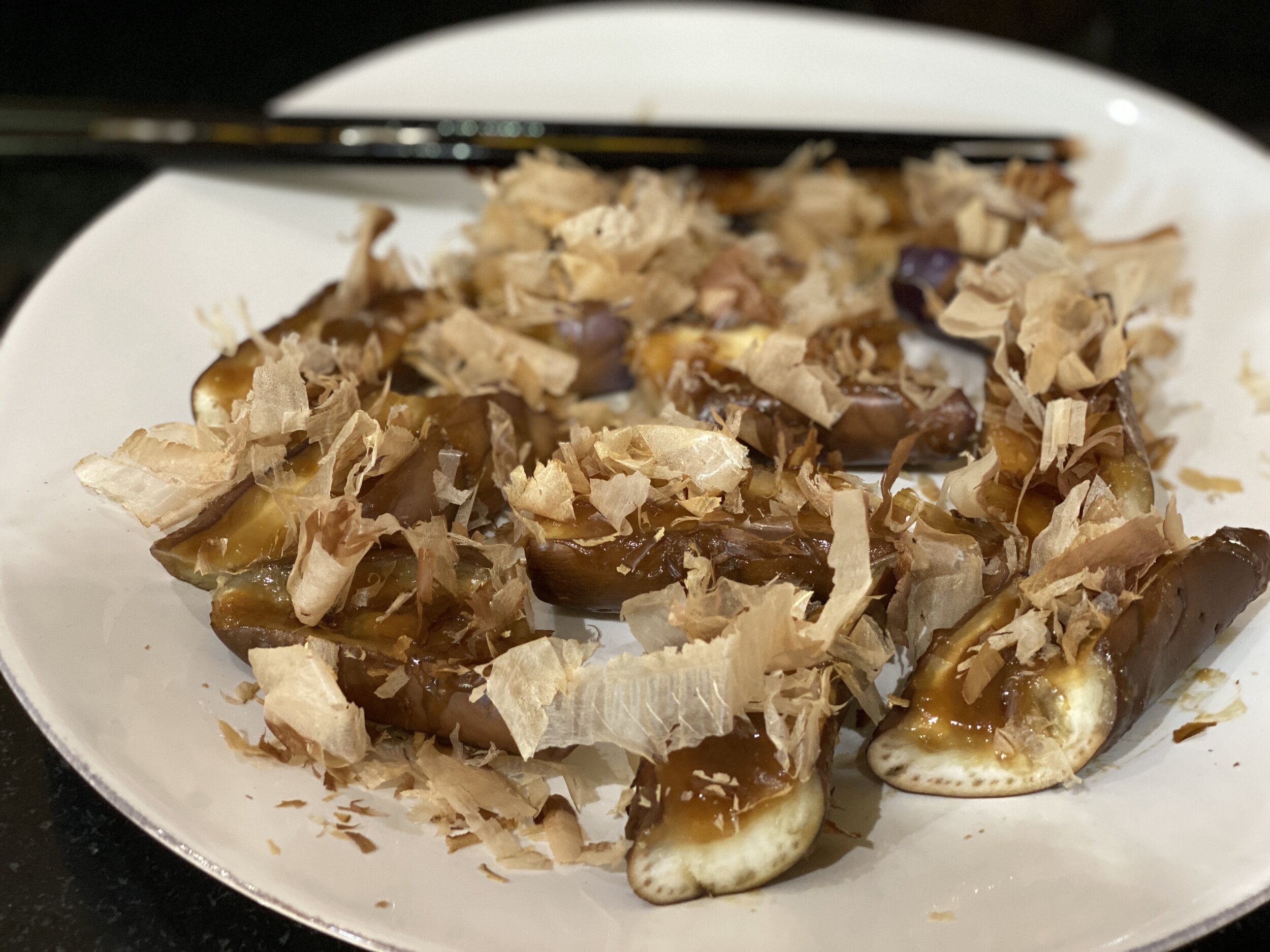By Leslie Brenner
There’s nothing like a sweet potato, hot from the oven, simply roasted till it’s super tender and caramelized syrup oozes out of its orangey-purple skin. Slice it open, push the ends together to reveal the gorgeous, meltingly soft flesh, and send in your spoon. What a treat, that custardy bite: It’s luscious and rich, autumnal sweet chased by an earthy, mineral tang.
How many other plant-foods can you think of that are delicious and satisfying enough to be an entire meal with no added ingredients? Beans and lentils could almost be that, but impossible to enjoy them without salt. A perfectly roasted sweet potato needs no such seasoning.
Naturally, sweet potatoes are also spectacular dressed up — as in the gratin with sage-butter and thyme I love to serve for Thanksgiving.
But I’m not waiting till the holiday to indulge in sweet potatoes: This weekend I’ll roast a few of them, dress them up (or not). and swoon. From now till my favorite food holiday, there are all kinds of ways to enjoy them.
Slather with miso butter and layer on sliced scallions and furikake (Japanese seasoning mix), for something transportingly delicious. One of my very favorite autumn dishes, it makes a dreamy (meatless) dinner, either on its own, preceded by a salad or followed by a soup, or some braised lentils, creamy white beans or soupy mayocoba beans.
Miso butter, if you’re not familiar with it, is a brilliant invention: Just combine softened unsalted butter and miso in equal amounts. (White miso is ideal, but any kind will be good.) Slit open the sweet potato, and slather it on. It’s delicious just like that, or you could grind on some black pepper. Or dress it up as in this photo (and recipe).
A sparkling autumn salad
Sweet potatoes are also marvelous in a fall salad, playing off another favorite autumn ingredient: pomegranate. The gem-like, tangy juicy seeds commune gorgeously with the creamy richness of the sweet potato; baby kale provides the perfect deep-flavored, earthy base and and toasted pecans add crunch. Again, great with just a soup to precede or follow it. (Roasted black bean!)
Slice and layer in a gratin
When Thanksgiving rolls around, I always make one of two sweet-potato gratins. The first was dreamed up by food writer Regina Schrambling, a frequent collaborator when I was Food Editor at The Los Angeles Times many years ago. Unlike those candied gratins so popular at holiday time, this one is savory — enriched with cream and butter and heightened with lots of fresh thyme.
The second savory gratin turns Regina’s version on its side — stacking the slices upright in the baking dish — and adds the classic Italian combination of brown butter and sage. It’s kind of outrageous.
RECIPE: Sweet Potato Gratin with Sage-Butter
Choose your sweet potato
Wondering what type of sweet potato to start with?
For any of these dishes (and any other I might think of), I always choose the garnet variety: Garnet sweet potatoes are exceedingly moist and sweet, not as starchy as some other varieties, and their flesh stays a saturated orange color when cooked. You’ll recognize them by their dark, purply skins. In fact, I love this variety so much I never buy any other.
Can’t commit to one of these iterations? Just go ahead and roast one plain. No recipe necessary — scrub the skin (you’ll definitely want to eat it), poke the tines of a fork in it in seven or eight places to create vents, so it doesn’t steam inside, lay it on a small baking dish or quarter-sheet pan lined with parchment and roast at 400 degrees till it’s very soft and oozing dark syrup. How long depends on the thickness of the sweet potato; a medium-sized one that’s more long and slim than fat and squat might take 45 or 50 minutes; thicker ones can take more than an hour.
Eat it piping hot, with nothing on it. Incredible how good it is, right?
If you enjoyed this story, you might like:
READ: 6 Essential and (riffable) soups to take you through fall and beyond
READ: Moussaka’s marvellous makeover
READ: It’s beginning to smell a lot like couscous
READ: Cookbooks We Love: ‘Budmo’ deliciously captures the spirit of Ukraine
RECIPE: ‘Falastin’ Baked Kofta with Eggplant and Tomato
RECIPE: World Butter Chicken
RECIPE: Cardamom-Pumpkin Spice Bread

